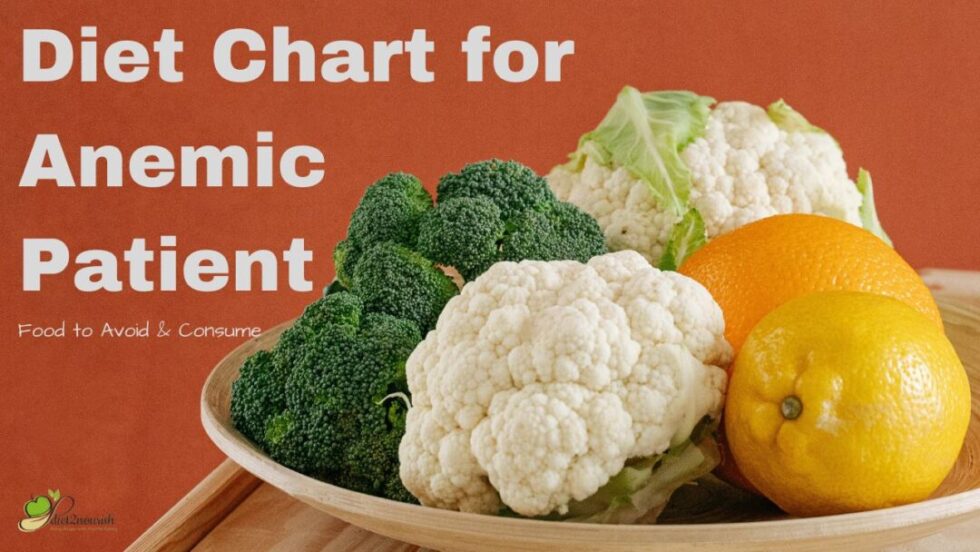Anemia is a common condition that occurs when the body doesn’t have enough red blood cells to carry oxygen to tissues throughout the body. Anemia can be caused by a variety of factors, including iron deficiency, vitamin B12 deficiency, or other underlying medical conditions. A well-balanced diet is an important part of managing anemia, as it can help increase the body’s iron levels and improve overall health. Here is a sample diet for anemic patient
Breakfast: A nutritious breakfast can help provide energy for the day and boost iron levels. Here are some ideas:
- A bowl of iron-fortified cereal with almond milk and sliced banana
- A spinach and mushroom omelet with whole grain toast
- A Greek yogurt parfait with mixed berries and granola
Snack: A healthy snack can help keep blood sugar levels stable and prevent fatigue. Here are some ideas:
- Apple slices with almond butter
- Trail mix with nuts and dried fruit
- Carrot sticks with hummus
Lunch: Lunch should be well-balanced and include foods rich in iron and other essential nutrients. Here are some ideas:
- A spinach salad with grilled chicken breast, cherry tomatoes, and sliced almonds
- A tuna salad sandwich on whole grain bread with sliced cucumber and baby carrots
- A lentil soup with whole grain crackers and mixed greens
Snack: Another healthy snack can help keep energy levels up throughout the day. Here are some ideas:
- A hard-boiled egg with whole grain crackers
- Greek yogurt with sliced banana and chia seeds
- Roasted chickpeas with mixed vegetables
Dinner: Dinner should be balanced and nutritious, providing a good source of iron and other essential nutrients. Here are some ideas:
- Grilled beef with roasted sweet potatoes and mixed greens
- Baked salmon with quinoa and steamed broccoli
- Chicken stir-fry with brown rice and mixed vegetables
Dessert: A small, healthy dessert can be a nice way to round out the day. Here are some ideas:
- A fresh fruit salad with Greek yogurt
- Dark chocolate squares with sliced almonds
- Frozen banana bites with peanut butter
In addition to these meals and snacks, anemic patients should also consume foods rich in iron, vitamin B12, and folate. Here are some examples:
- Red meat, such as beef and lamb
- Poultry, such as chicken and turkey
- Fish, such as salmon and tuna
- Leafy greens, such as spinach and kale
- Legumes, such as lentils and beans
- Nuts and seeds, such as pumpkin seeds and cashews
It is important to note that anemic patients should also avoid certain foods that can interfere with iron absorption, such as tea and coffee. Vitamin C can help improve iron absorption, so it is recommended to consume vitamin C-rich foods with iron-rich foods.
It is also important to note that the severity and type of anemia can vary, and a diet alone may not be sufficient to manage certain types of anemia. In some cases, medical intervention may be necessary, such as iron supplements, vitamin B12 injections, or treatment for an underlying condition causing the anemia.
It is also important to maintain a healthy lifestyle in addition to a well-balanced diet. Regular exercise, stress management, and adequate sleep can all help improve overall health and energy levels.
In conclusion, a well-balanced diet rich in iron, vitamin B12, and folate is an important part of managing anemia. Including a variety of iron-rich foods, such as red meat, leafy greens, and legumes, can help increase iron levels in the body. Avoiding certain foods that can interfere with iron absorption, such as tea and coffee, can also be helpful.
